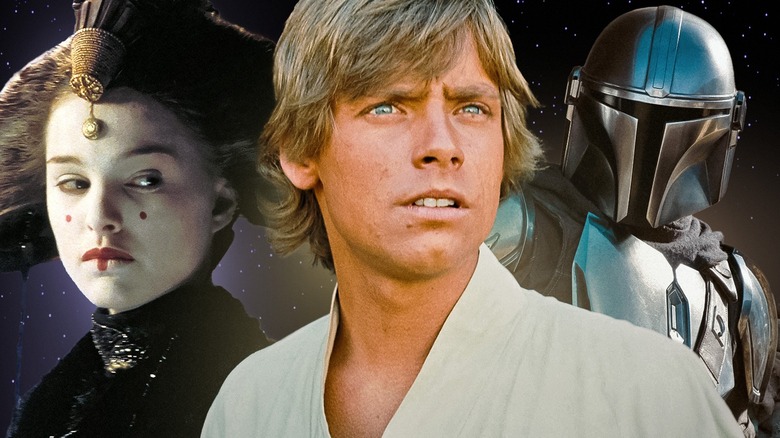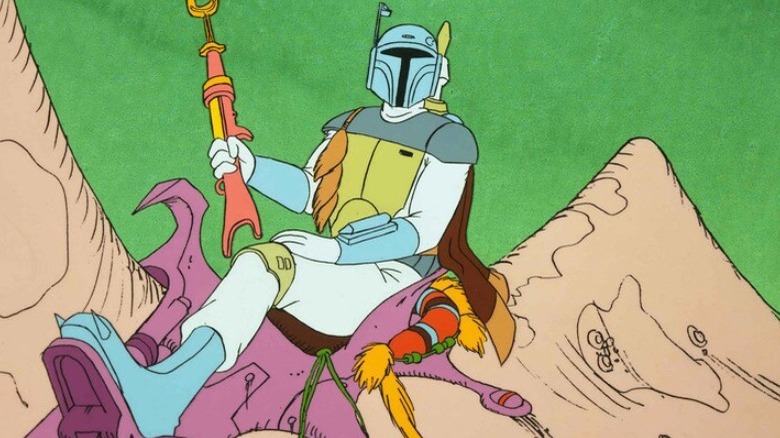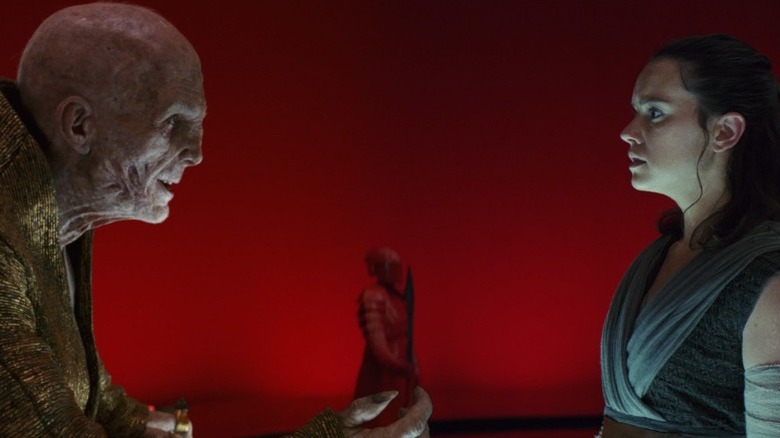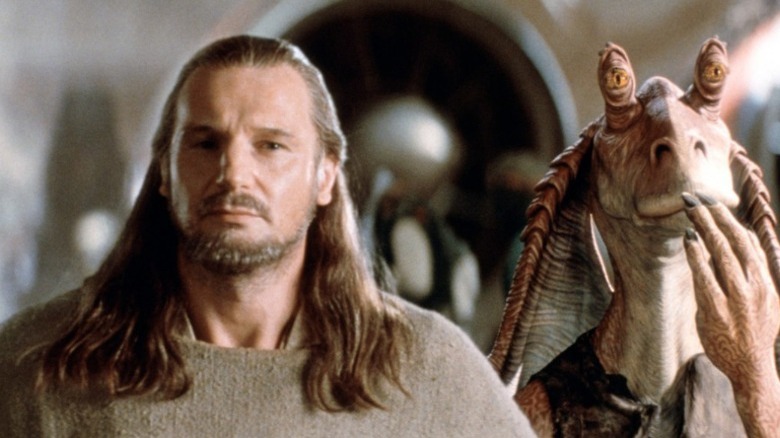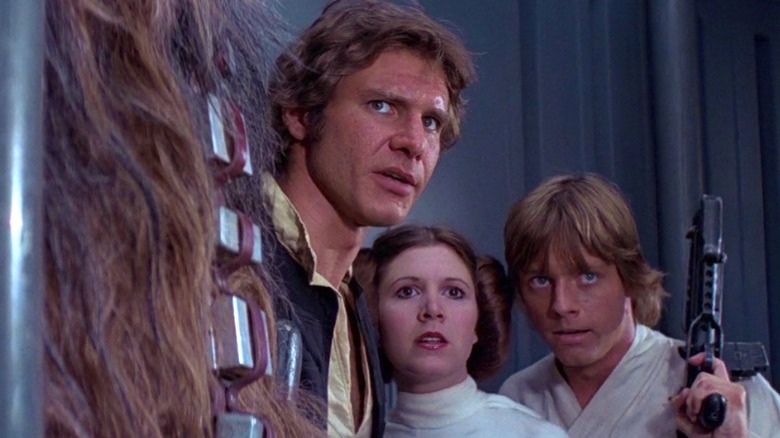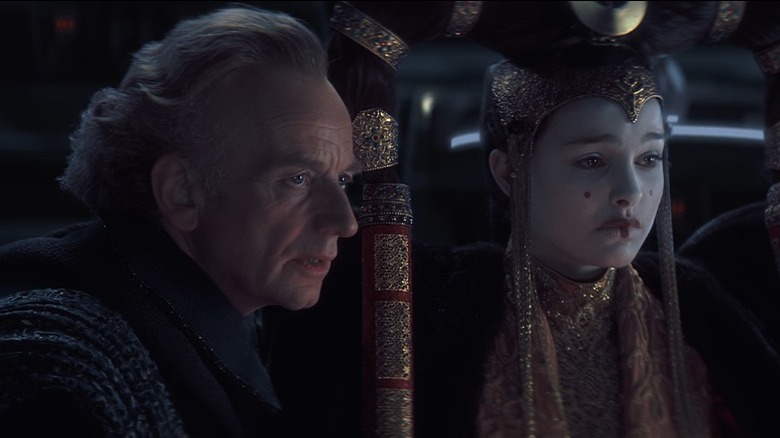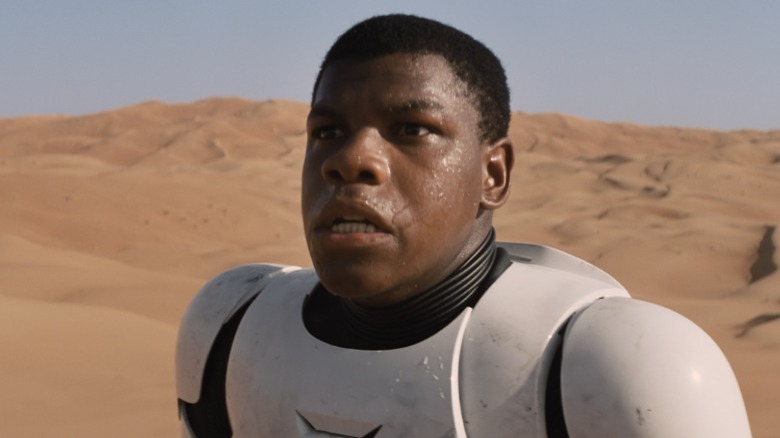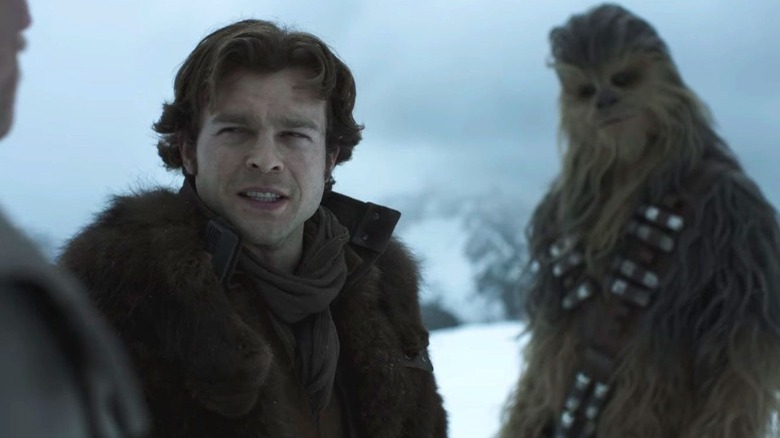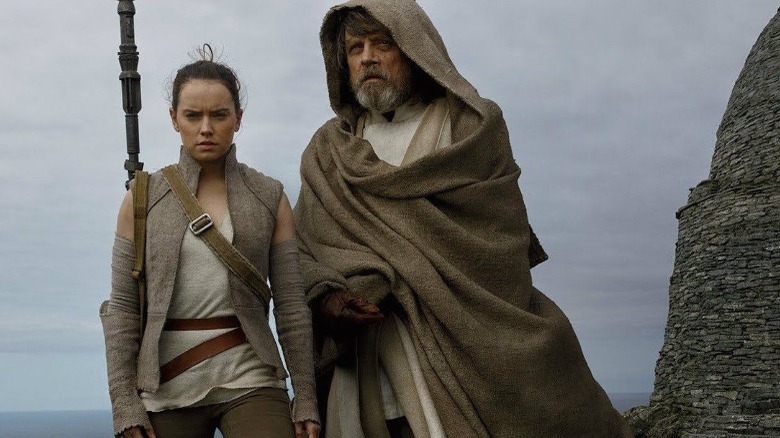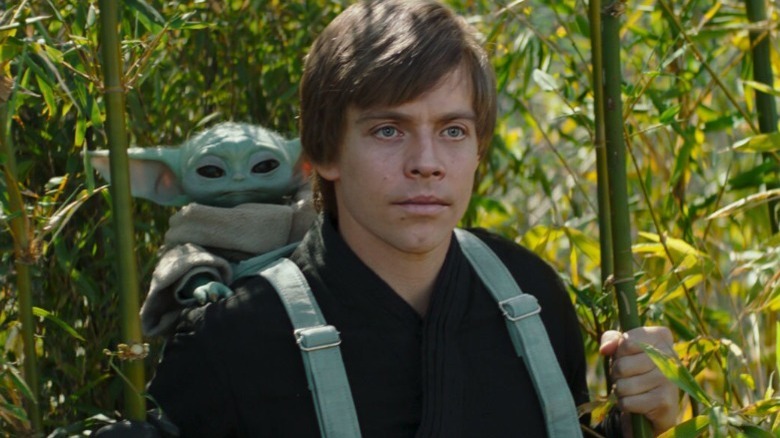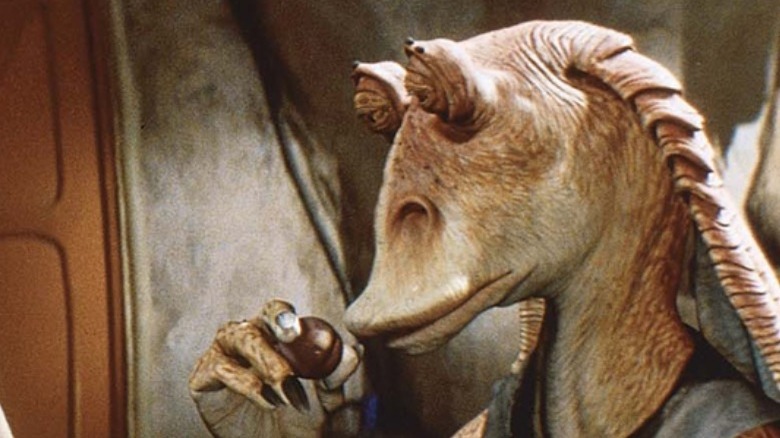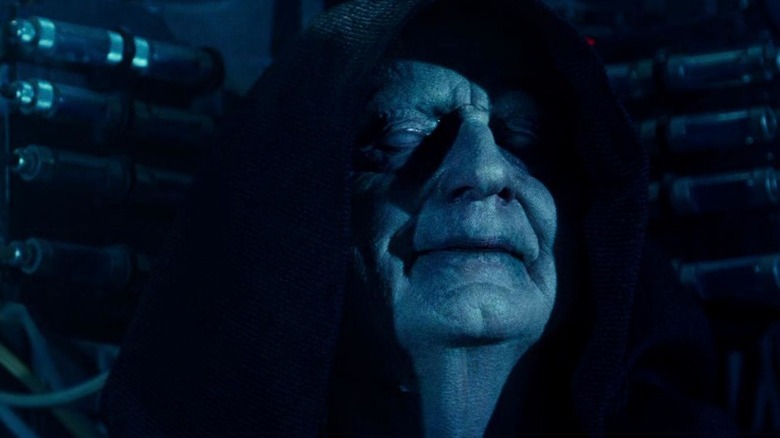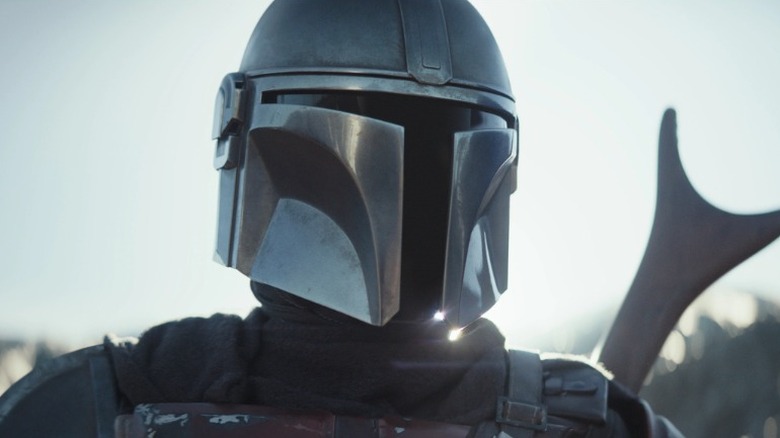The Biggest Mistakes The Star Wars Franchise Ever Made
Since making its debut in 1977 with the movie later known as "Star Wars: Episode IV – A New Hope," the epic space opera franchise has become one of the most successful entertainment series in the world. Over the course of the last four decades, "Star Wars" has grown to encompass a dozen feature-length films and several live-action and animated television series, alongside countless books, comics, and games. With a total box office gross in excess of $10 billion there's little denying that the franchise is a worldwide phenomenon beloved by millions of fans.
Of course, none of that means that there haven't been some missteps in "Star Wars." The series has come under a steady stream of criticism since its early days, although the negative reaction has undoubtedly ratcheted up in recent times. Everyone from series creator George Lucas to directors and writers like J.J. Abrams and Rian Johnson have faced condemnation in some form or another.
Whether it's story elements of particular films or bizarre releases no one liked, plenty of "Star Wars" franchise errors have irked viewers. Here are the biggest mistakes in the series so far.
The Star Wars Holiday Special
The surprise success of the first "Star Wars" film in 1977 soon led to the franchise expanding to take advantage of the enormous fan following. One of the earliest examples of this was the "Star Wars Holiday Special." Written by a team that included Pat Proft and Bruce Vilanch, it was a television special designed to tide fans over during the wait for the forthcoming "The Empire Strikes Back." The story primarily follows Han Solo (Harrison Ford) and Chewbacca (Peter Mayhew) as they visit the Wookiee home planet Kashyyyk for Life Day while pursued by Imperial forces.
More '70s variety show than thrilling space adventure, the "Star Wars Holiday Special" was panned by almost everyone who saw it, including fans and critics alike. George Lucas admitted the whole thing had been a colossal mistake. Cast members such as Mark Hamill were also against the project, with the Luke Skywalker actor claiming it was too different in tone from the hit movie. The special has never been released on home video or re-run in full on TV.
The only positive thing to come out of the special was an animated short named "The Story of the Faithful Wookiee." Now available on Disney+ as a standalone release, it marks the first on-screen appearance of the bounty hunter Boba Fett, and is the only part of the special that most people agree is actually pretty good.
Disney releasing too many films too quickly
Disney gained the rights to "Star Wars" with its acquisition of Lucasfilm in 2012. Almost immediately, the company announced a brand new trilogy to continue the story of the Skywalker family. The first entry in this new series, "Star Wars: Episode VII – The Force Awakens," hit cinemas in 2015. More films came over the course four years of that, with "Star Wars: The Last Jedi" arriving in 2017 and "Star Wars: The Rise of Skywalker" in 2019. That was a much more accelerated release schedule than the earlier trilogies, which launched their movies three years apart from each other.
That doesn't even take into account the fact that Disney also released two standalone movies with "Rogue One: A Star Wars Story" and "Solo: A Star Wars Story" during that time. What this meant for fans is five new movies in as many years. This accelerated schedule oversaturated viewers and was undoubtedly an error –- something that Disney executives have admitted themselves.
Disney CEO Bob Iger took responsibility for the issue in an interview with The Hollywood Reporter. "As I look back, I think the mistake that I made — I take the blame — was a little too much, too fast," said Iger. "But I think we're going to be a little bit more careful about volume and timing. And the buck stops here on that."
Explaining the Force with Midi-chlorians
Before the release of the prequel trilogy, the Force was a mystical concept without a scientific explanation. Almost everything fans knew about it came from brief conversations Luke had with Obi Wan Kenobi and Yoda, about it being a spiritual energy that connected together every living being in the galaxy. Some individuals have a stronger connection to the Force, which allows them to perform almost magical feats, while others are unaware or disbelieving of its existence.
All of that changed with the release of "Star Wars: Episode I – The Phantom Menace" in 1999. George Lucas, in an attempt to add clarity to what the Force was and how it worked, actually muddled matters and caused more confusion. The film revealed that a person's access to the Force is determined by the number of midi-chlorians they possess inside the cells of their bodies. These microscopic life forms are what allow people to connect to the Force and a greater number of them essentially makes a person more talented in their ability to use it.
Out of all the controversy created by the prequel trilogy, the introduction of midi-chlorians is arguably the most concerning. It took away from the mystery of the Force and instead made it into something that could be tested for with a simple blood test, as Qui-Gon Jinn (Liam Neeson) does to Anakin Skywalker (Jake Lloyd).
Not getting Luke, Leia, and Han back together
The sequel trilogy brought back Luke Skywalker, Leia Organa (Carrie Fisher), and Han Solo back into the fold. These three were the iconic heroes of the original trilogy, and including them in the new films added a much-needed connection to what had come before. The trio rank among the most enduring characters in pop culture, so fans were understandably excited to see them back on screen.
The problem, though, is that Luke, Leia, and Han are actually not shown together at any point. Han Solo gets the most screen time in "Star Wars: Episode VII – The Force Awakens," but he interacts almost exclusively with Chewbacca (Peter Mayhew) and Rey (Daisy Ridley), with just a brief reunion with Leia. Meanwhile, Mark Hamill only appears at the very end of the film for a few seconds in what can only be described as a cameo.
Failing to have all three reunite is a clear mistake. Not only did it prevent fans from getting to see the old gang working as a team once again, but it made the fact that they were brought back at all less important. Hamill himself even claimed that he thought the lack of a reunion was an error.
The mess that was The Phantom Menace
It's hard to overstate just how big of a cultural event "Star Wars: Episode I – The Phantom Menace" was for fans. Released in 1999, it was the first new theatrical release in the franchise since "Star Wars: Episode VI – Return of the Jedi" some 16 years earlier. Highly anticipated, the movie kicks off the prequel trilogy that details the fall of the Old Republic, the rise of Emperor Palpatine (Ian McDiarmid), and the transformation of Anakin Skywalker to Darth Vader (Hayden Christensen).
Despite impressive visual effects and the return of some fan-favorite characters, the first prequel movie was a critical disaster — albeit one that managed to be a massive financial success. Complaints ranged from a boring and confusing story to criticism about bizarre aliens tinged with racial caricature, such as Jar Jar Binks (Ahmed Best). But it wasn't just fans that were aware of the problems of the film, as even George Lucas admitted that he may have gone too far.
Speaking after a rough cut screening of the film (via The Hollywood Reporter), Lucas said, "It's a little disjointed. it's bold in terms of jerking people around. I may have gone too far in a few places." However, the director also came to this realization too late in the process to make significant fixes, as each scene was essential in leading to the next story beat.
Wasting the talent of John Boyega
In many ways, "Star Wars: Episode VII – The Force Awakens" was something of a mirrored telling of the very first "Star Wars" film. Like "A New Hope," the more recent film introduced fans to a trio of young heroes fighting against the First Order as part of the Resistance, in the same way that Luke, Leia, and Han fought against the Galactic Empire with the Rebel Alliance. Daisy Ridley portrayed the Force-sensitive Rey, Oscar Isaac the ace X-Wing pilot Poe Dameron, and John Boyega the rebellious stormtrooper Finn.
Unfortunately, Boyega was wasted as an actor within the two sequels that followed. His part was reduced — something that surprised the actor himself considering the marketing push featuring his character in the trilogy's first film — and he was no longer a lead but rather a smaller part in an ensemble. Boyega has spoken openly about his experience of working on "Star Wars" and the negative connotations that came with it. He also faced a lot of racism after his casting was announced. However, the fact that Disney effectively pushed him aside was a huge mistake given his award-winning acting talent and the new perspective that Finn offered as a character.
Production problems on Solo: A Star Wars Story
Alongside the new sequel trilogy, Disney also released two standalone films designed to tell separate stories outside of the Skywalker Saga. One of these was 2018's "Solo: A Star Wars Story" from director Ron Howard, which acts as an origin story for young Han Solo (Alden Ehrenreich), explaining how he met Chewbacca (Joonas Suotamo) and became a smuggler. Featuring a cast made up of Donald Glover, Emilia Clarke, Woody Harrelson, and Phoebe Waller-Bridge and focusing on one of the most popular characters in the franchise, this "Star Wars" film should have been a huge hit.
But when it hit cinemas, "Solo: A Star Wars Story" failed spectacularly. It grossed just $393 million against a budget of $275 million, making it a box office bomb despite relatively positive reviews. Some of this may be attributed to the behind-the-scenes production problems that eventually became bad enough to halt filming altogether. Reports suggested that original directors Phil Lord and Christopher Miller were too experimental and relied far more on improvisation.
Lucasfilm president Kathleen Kennedy eventually fired the pair, bringing in Ron Howard to reshoot most of the footage and finish the project. This is just one example of a wider problem for Lucasfilm in terms of its issue with directors, with the studio clashing with and even replacing multiple creative teams during the sequel trilogy and its Disney+ successors.
Not having a proper plan for the sequel trilogy
The biggest criticism of the sequel trilogy is that, taken together, the movies don't seem to tell much of a cohesive story with an overarching plot. Instead, the three more recent "Star Wars" films can feel disjointed and confusing, almost as if there wasn't an overall plan for the films to follow. The quick from Disney's acquisition of Lucasfilm to the release of "Star Wars: Episode VII – The Force Awakens" may well be responsible in some way for this, as it meant there was little time to establish exactly what Disney wanted to achieve with the trilogy from a storytelling perspective.
In fact, director J.J. Abrams has admitted as much. Speaking in an interview with Collider, the filmmaker suggested that Disney and Lucasfilm executives didn't have a proper plan in place to provide a framework for the various writers and directors. "You just never really know," Abrams said, "but having a plan I have learned — in some cases the hard way — is the most critical thing, because otherwise, you don't know what you're setting up."
It goes without saying that if Disney truly did embark on a trio of films in one of the most popular entertainment franchises in the world without an idea of how everything would play out, then that is a horrendous error and no doubt a significant reason why the sequel trilogy has faced so much criticism.
Becoming obsessed with digital recreations of past characters
Many of the latest "Star Wars" films and television series are set not at the same time as the recent sequels, but shortly before and after the events of the original trilogy. It makes sense to explore this time period, as it features many of the most popular characters from the franchise and can focus on previously untold stories.
However, it does mean that many of the original actors are now too old to play their younger fictional counterparts, or have died in the years since. This has led to Disney and Lucasfilm using technology to digitally recreate characters and de-age actors. While many of these attempts are unnervingly accurate, the process has caused some controversy for the way it diminishes the work of performers.
Disney would likely be better served not relying on digital effects to portray characters as they once were. Instead, it may well be more effective to either recast the parts or introduce new figures entirely. Those solutions would help end the franchise's reliance on CGI characters and help it move on from being obsessed with the past.
George Lucas directing the prequel trilogy
The influence of George Lucas on the "Star Wars" franchise is immense. Not only did he create the series and direct the first film, but he also developed the stories for every entry in the original and prequel trilogy. Without him, "Star Wars" would simply not exist. Still, while Lucas wrote and directed the first movie (with uncredited rewrites by Gloria Katz and Willard Huyck), he stepped back in some respects for its two sequels. "The Empire Strikes Back" was directed by Irvin Kershner and written by Leigh Brackett and Lawrence Kasdan, while "Return of the Jedi" saw Richard Marquand take the helm and Kasdan work with Lucas on the script.
This allowed Lucas to work more on the overall ideas for "Star Wars" and hand over some of the hands-on duties to people with different perspectives who could add something to the process. It's no coincidence that the first two sequels are considered among the best entries in the entire franchise and some of the best films ever made. When it came to the prequel trilogy, though, Lucas was responsible for everything.
This was a clear mistake, as it gave too much control to one person. While Lucas was the caretaker of the "Star Wars" universe, his total authority of the prequels meant that there were no stylistic differences between the films and they all had the same feel. Combined with his self-confessed poor dialogue writing and a lack of people around to challenge him, the prequel trilogy couldn't live up to its predecessors.
Bringing back Emperor Palpatine
The sequel trilogy has many detractors, and one of the major bones of contention is the return of Emperor Palpatine. There are several reasons why bringing him back for the final film in the Skywalker Saga was an error. First of all, introducing new antagonists added a new dimension to the franchise, showcasing that there were other villains who could be just as big a threat. It also undoes the impact and emotion of Palptine's death at the hands of Darth Vader in "Return of the Jedi" and undermines the Sith Lord's redemption to protect his son. Finally, the Emperor was only revealed at the last moment in the trilogy without any real explanation.
Actor Ian McDiarmid has revealed that George Lucas had no intention of bringing back Palpatine in future stories, suggesting that the series creator considered the character dead and truly defeated. Meanwhile, Colin Trevorrow, who was set to direct "Episode IX – The Rise of Skywalker" before being replaced with J.J. Abrams told Empire that he had no intention of including Palpatine when he was working on the film, suggesting it was not part of any grand vision for the trilogy.
Sidelining main characters
Disney has seen some success with its offering of "Star Wars" television series, with "The Mandalorian," "Andor," "The Book of Boba Fett," and "Ahsoka" all receiving plaudits from critics and fans alike. Nevertheless, there is one major issue shared by several of these series, namely the way they sideline their main characters. For instance, the sixth episode of "Ahsoka" only features the titular character — played by Rosario Dawson — for a brief scene at the start, with the rest of the action focusing entirely on Sabine Wren (Natasha Liu Bordizzo) and Ezra Bridger (Eman Esfandi).
"The Book of Boba Fett" makes a similar misstep, with the infamous bounty hunter taking a back seat for two entire episodes of the series. Both "Chapter 5: Return of The Mandalorian" and "Chapter 6: From the Desert Comes a Stranger" focus on the main characters of "The Mandalorian," Din Djarin (Pedro Pascal) and Grogu rather than Fett (Temuera Morrison), who didn't really need to take over so much of the spin-off when they have a show of their own.
On the other hand, Din and Grogu suffered the same fate in the third season of "The Mandalorian." Many fans have noted that the show started putting an undue emphasis on many other characters, like Bo-Katan Kryze (Katee Sackhoff), Dr. Penn Pershing (Omid Abdahi), Kelleran Beq (Ahmed Best), and even Luke Skywalker. Din Djarin is instead treated as a sidekick to provide comic relief, a far cry from the Season 1 portrayal that fans adored.
